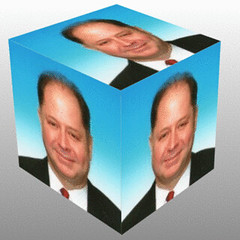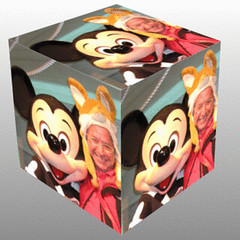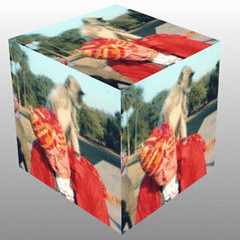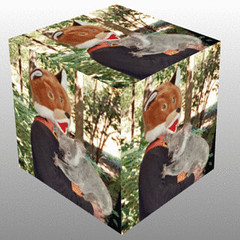http://en.wikipedia.org/wiki/Watchmen
The superheroes of this universe are only vaguely based on the originals from Charlton Comics so arguably this is not a reboot at all. The main superheroes of the Watchmen universe include Captain Metropolis, the Comedian, Doctor Manhattan, Dollar Bill, Hooded Justice, Mothman, Nite Owl I, Nite Owl II, Ozymandias, Rorschach, Silhouette, Silk Spectre I and Silk Spectre II. This is Moore’s last universe reboot alphabetically but his second chronologically. This is the series that brought Alan Moore fame and fortune in the US.
The comic book within a comic book takes the form of a pirate comic book named Tales of the Black Freighter. A teen who happens to be at a newsstand, were the lives of the heroes intersect, is reading the comic book on the curb. We view the panels of this comic book within a comic book as the series progresses. The plot line of Tales of the Black Freighter comic book is reminiscent of the Heart of Darkness by Joseph Conrad. The comic book within the comic book also reflects the larger world’s descent into WW III and annihilation. The Watchmen’s universe is too gritty and real for us to believe that anyone will survive as they generally do in comic books. Nixon is President since he had those pesky Watergate reporters killed by the Comedian, a super hero!
Although this is never stated in so many words, there are enough references to Einstein and his thinking that one can assume Moore has probably read Einstein’s comment that good and evil are manmade constructs. Doctor Manhattan as more force of nature, than human takes this literally and departs from Earth to Mars rather than stop WW III.
One of the more disturbing characters, Rosarch has an epiphany while watching dogs eat the bones of kidnapped girl and becomes a Nietzsche superman, beyond good and evil. In contrast to Dr. Manhattan, who is a Superman type superman and then some. Dr. Manhattan could easily take out Superman! Dr. Manhattan is also four dimensional and shifts in and out of the present into the future and past and actually little gains the insight that past, present and future do not actually exist and therefore free will does not exist.
Ozymandias is a Batman type superhero who decides to create a fake alien invader that kills millions in New York City in order to unite the world against a larger enemy. Ozymandia succeeds and thus averts WW III. The bad guy has succeeded! This doesn’t happen very much in comic books but is he really a bad guy. Ozymandias has lied to his fellow heroes, killed millions, and even killed his own servants but he did this to save the world and if fact did save the world. Do the ends justify the means?
Another aspect of the Watchmen that is different from other works by Moore is his extreme use of symbolism. The watch as symbol is used throughout the book. The watch does not just represent time and the inexorable flow of events as most readers can easily figure out. The watch also acts a secondary symbol that I think very few readers figure out. The watch is symbolic of the most important question in human existence. Is there a watchmaker? Or more broadly does “existence precede essence” Is there an underlying karma, purpose, a plan to the universe?
Are the watchmen just watchmen as in the quote by Juvenal “Who will watch the watchmen” or are the watchmen also agents of the watch maker? If the watchmaker is God as Newton stated then are not the Watchmen agents of God? The Watchmen is an incredibly ambitious work that asks all the big questions yet provides an entertaining story. The Watchmen to some extent was an inspiration for my novel Half Square (https://foxhugh.wordpress.com/half-square-chapter-1-agent-wanted/) in that I wanted to explore the big questions but do so in an entertaining manner. Unlike my novel which is unpublished and largely unread, the Watchmen were a huge commercial success and have been reprinted in graphic novel form continuously. The Watchmen is the greatest comic book ever written period! The Watchmaker is the only comic book to win a Hugo Award ever and rightly so. I would rank the Watchmen number one of the five reboots analyzed in this series.
So there you have it readers:
1) Watchmen
2) League of Extraordinary Gentlemen
3) Miracleman
4) Albion
5) Terra Obscura
Do you agree? Comments are more than welcome.
My other website at:
WereVerse Universe Baby!










